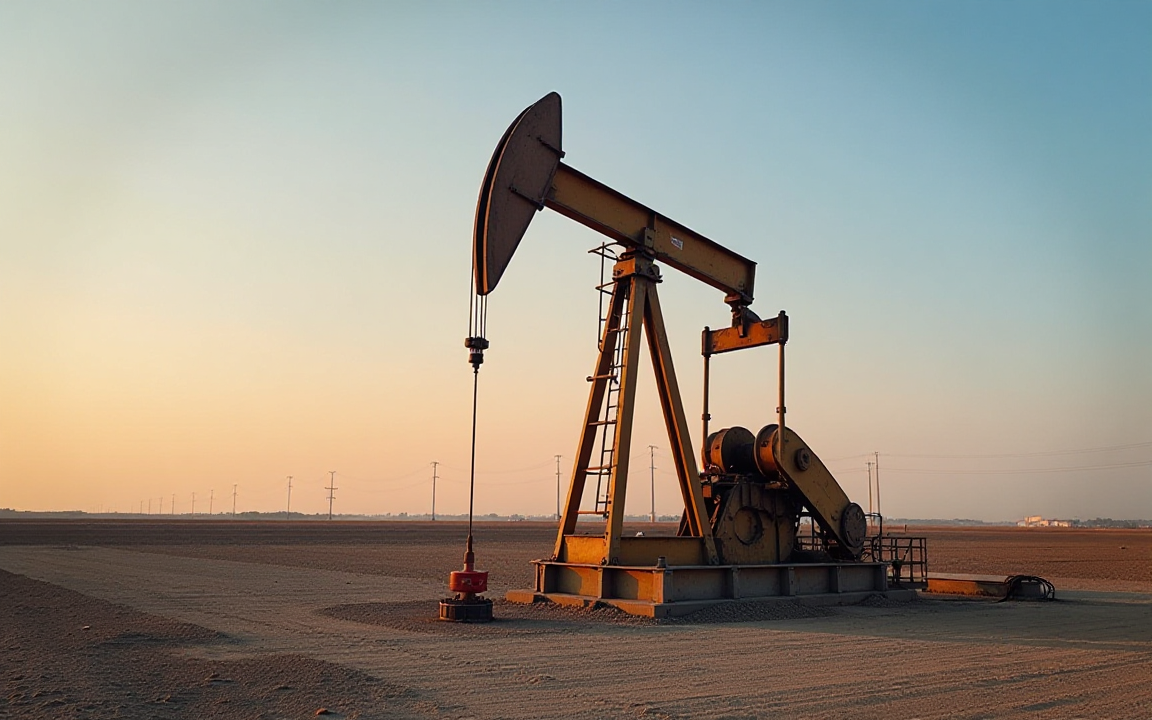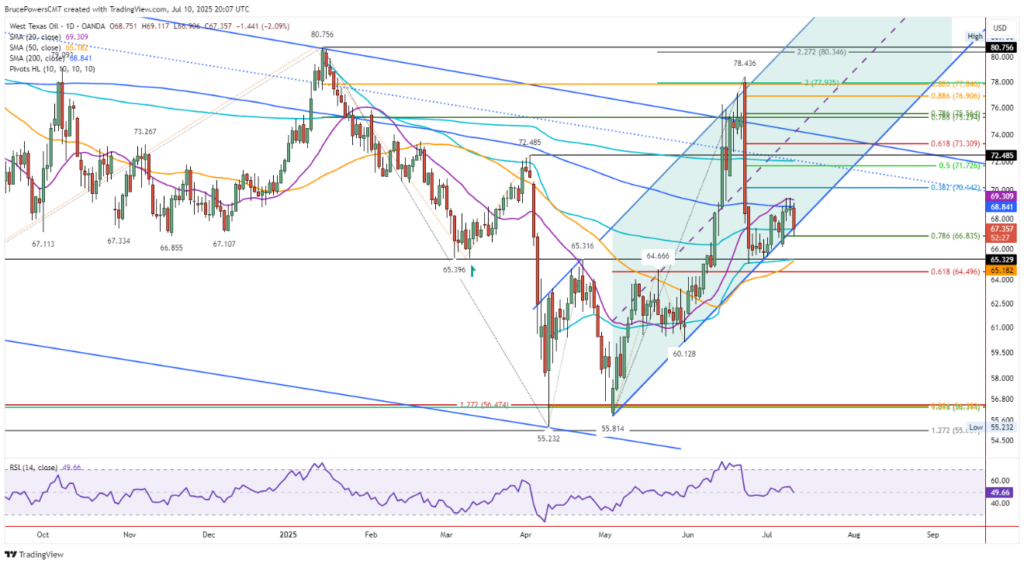
Oil prices rose on Friday, following US President Donald Trump’s announcement of an upcoming statement concerning Russia, which hinted at potential additional sanctions on the significant oil-producing nation.
However, concerns about tariffs and increasing output from OPEC+ limited these gains.
Prices recoup some of Thursday’s losses
At the time of writing, the price of West Texas Intermediate crude oil on the New York Mercantile Exchange was at $66.75 per barrel, up 0.3%.
Brent crude oil on the Intercontinental Exchange was around $68.76 a barrel, up 0.2% from the previous close.
This week, Brent crude has seen a 0.8% increase, while WTI has experienced a 0.2% dip.
On Thursday, both contracts saw a decline of over 2%. This downturn was attributed to investor concerns regarding the potential effects of Trump’s developing tariff policy on both global economic growth and the demand for oil.
“This morning, prices have recouped some of this decline after President Trump said he plans to make a ‘major’ statement on Russia on Monday. This could leave the market nervous over the potential for further sanctions on Russia,” ING analysts wrote in a client note on Friday.
Russian President Vladimir Putin’s intensified bombardment of Ukrainian cities and the lack of progress toward peace with Ukraine have reportedly frustrated Trump.
OPEC supply
ING analysts said:
Yesterday’s sell-off came despite reports suggesting that OPEC+ is near the end of its supply hikes.
OPEC+ over the weekend had agreed to increase oil production in August by 548,000 barrels per day as they continue to unwind voluntary output cuts.
Previously, the group had declared production increases of 411,000 barrels per day for May, June, and July, a rate three times higher than initially planned.
These significantly increased output hikes have sparked worries about potential oversupply, which could negatively impact the WTI price in the short term.
Potentially, there might be one more increase for September before the group takes a pause, according to ING.
“This doesn’t change our outlook for the market, as we had assumed OPEC+ would hike supply all the way through until the end of September,” ING analysts said.
These increases should move the global market into a large surplus in the fourth quarter, intensifying downward pressure on prices.
For now, the market remains relatively tight through the northern hemisphere summer, they added.
Meanwhile, in its 2025 World Oil Outlook, published on Thursday, OPEC revised down its global oil demand forecasts for 2026-2029.
This adjustment is primarily attributed to a slowdown in Chinese demand.
The group now projects an average global demand of 106.3 million barrels per day in 2026, a decrease from the 108 million bpd estimated in last year’s forecast.
US stock build to pressure WTI prices
Additionally, a large crude inventory in the US could contribute to WTI’s decline.
For the week ending July 4, crude oil stockpiles in the US increased by 7.070 million barrels.
This rise in stockpiles, reported by the US Energy Information Administration (EIA) in its weekly report, follows an increase of 3.835 million barrels in the preceding week.
The market consensus estimated that stocks would decrease by 2 million barrels.

WTI crude contracts are the benchmarks for the US.
The post Oil prices rise on Trump’s sanction threat on Russia; oversupply to weigh on sentiments appeared first on Invezz

